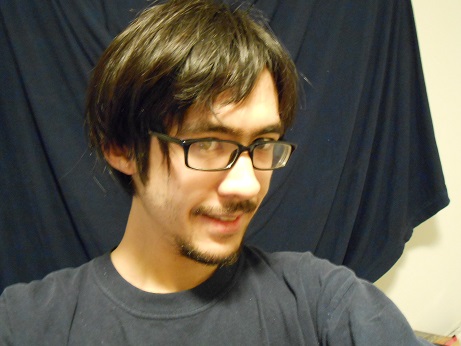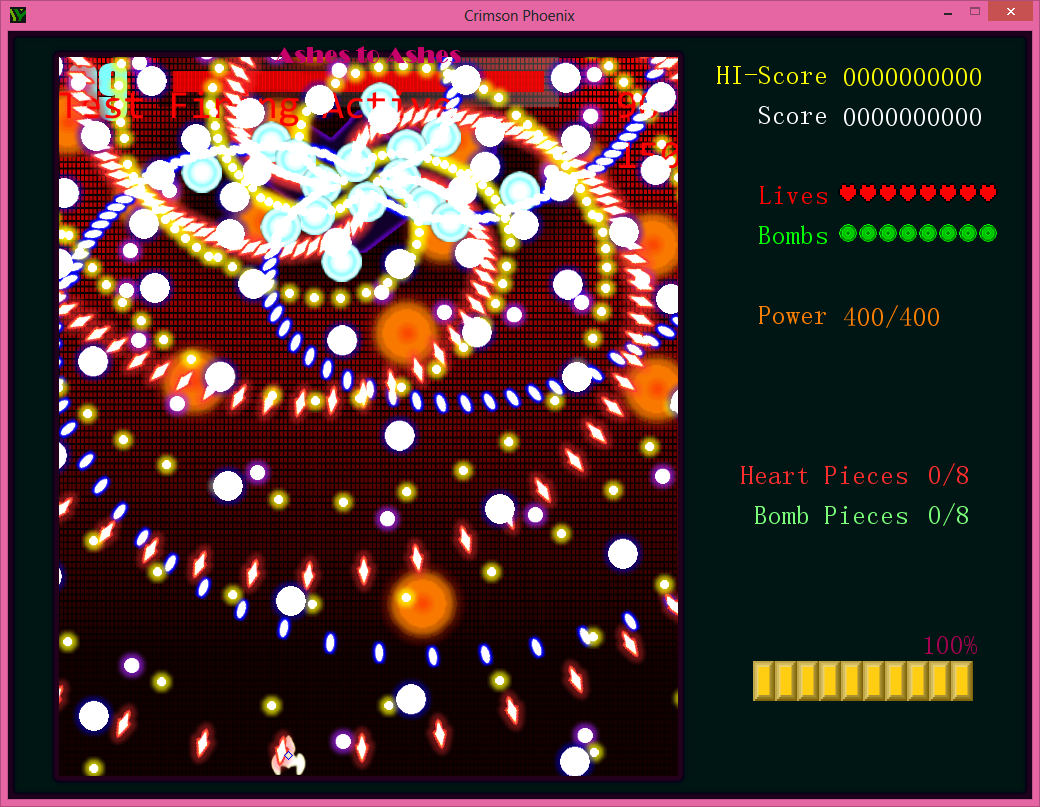
Crimson Phoenix. This was my solo senior project. It is a shmup that challenges the player with three back-to-back levels with up to 7 types of enemies, each with an ending boss with 3-5 phases. Each phase can be passed by depleting the health bar, or waiting for the phase timer to run out. There is a considerable score bonus for enduring the full phase duration. Enemy and boss attacks use a mix of player-directed attacks and blind attacks that cover the screen. The player can hold SHIFT in order to slow their movement and carefully dodge attacks. They can also gain temporary invincibility and enhanced damage once they fill their special guage, which increases from killing enemies and passing boss phases. Practice mode is available in order to quickly retry individual boss phases without going through the full game. Sounds and music were created with Famitracker, some modified with Audacity. Sprites and backgrounds were created with GIMP, Game Maker sprite editor, and MS Paint. Coded mainly with GML scripting instead of drag and drop events.
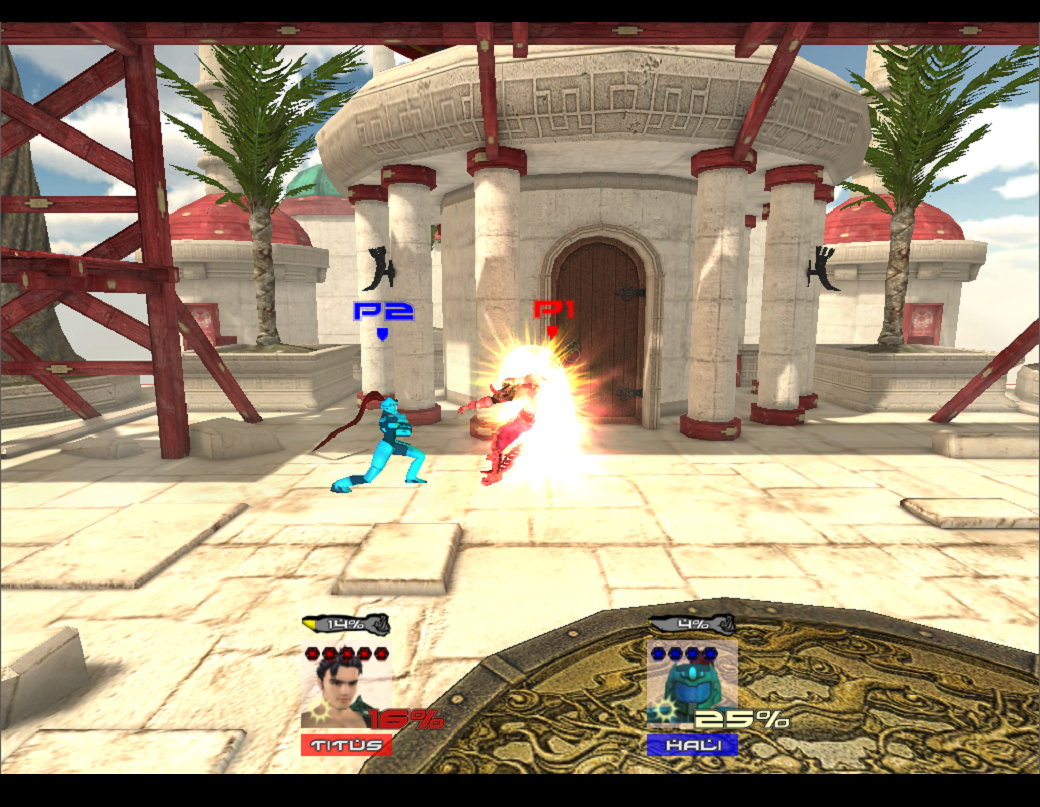
Indie Assault. After graduation I took an internship at Imagination Vent as my first job in the field. It was a start up company that was working on a smash-style game with licensed indie characters. During my 2 years there, I learned how to use Unity extensively, and created the fighting engine for them from the ground up, along with Normal and Hard AI for four of the characters. Other than difficulties obtaining character licenses, all the game was really missing was online multiplayer capabilities. But I knew very little about networking.
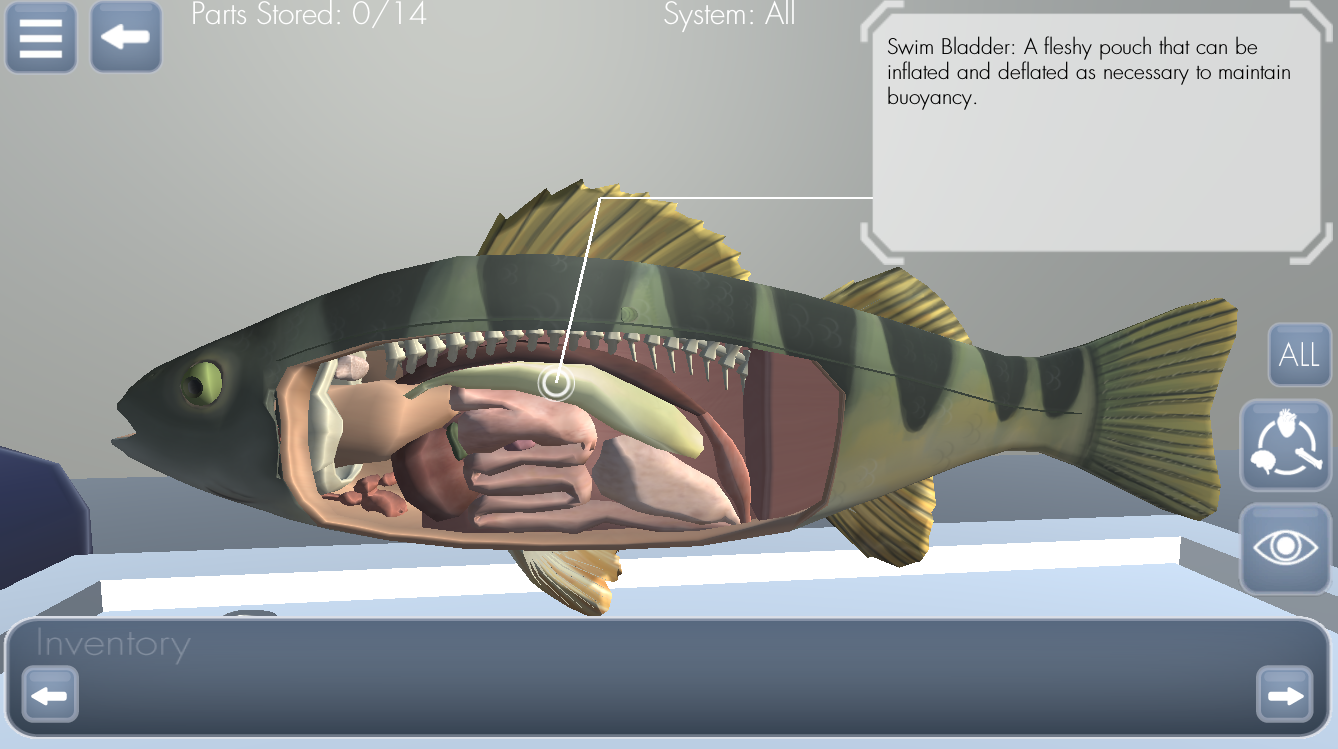
Specimen Dissection Lab. One of several projects created for Loma Linda University (LLU). The lab populates available specimens to examine off a web server using php to get a list of asset folders for each. Configuration files are used to name and describe each of the body parts, determine what views there are, determine how the materials should look in each view, and determine what system each body part belongs to so the student can filter through them. The lab was designed so the client can add their own resources to it at their leisure, using an assistant program to customize and package new specimens to add to the server, or to edit existing ones. The lab itself has 3 parts to each specimen. First step allows the student to check the name and descriptions of each of the body parts in each view. The second step goes through each body part, displaying four random description in multiple choice. The student must choose the correct answer to progress. The final step, all the body parts are in the students inventory, and they must rebuild the specimen by dragging each one into the correct spot, given the name of the part they must place next.
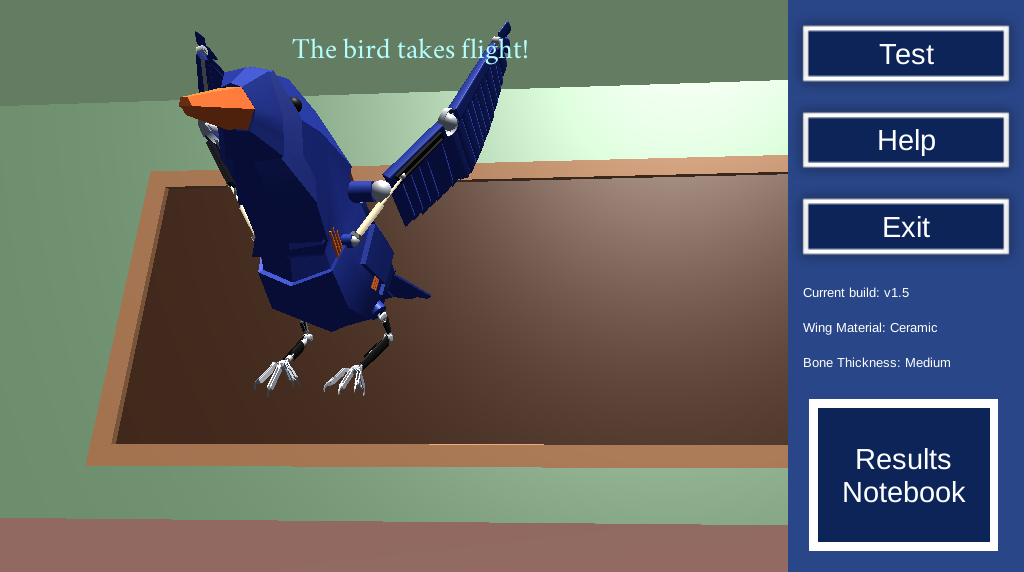
Bone Density Lab. LLU. The student can customize the bird's wings with a material and thickness. They can then test to see if the bird will fly or not, playing a bird flight animation if successful. All results are recorded in a chart. Once fully populated, they can print their results to a copy-to-clipboard textbox from which they can copy into their journal.

Varanimals Lab. LLU. The student can customize the initial traits on four variants of a single species, each with a population of 10 for a total of 40. To succeed, the species must endure 10 years, braving a variety of random events and environmental hazards. Over time, animals will be ready to mate. It's partner will be randomized, and their offspring's traits will be the average of the parents. Each trait can have advantages in certain situations and disadvantages in others, and will raise or lower their chance of survival during an event.
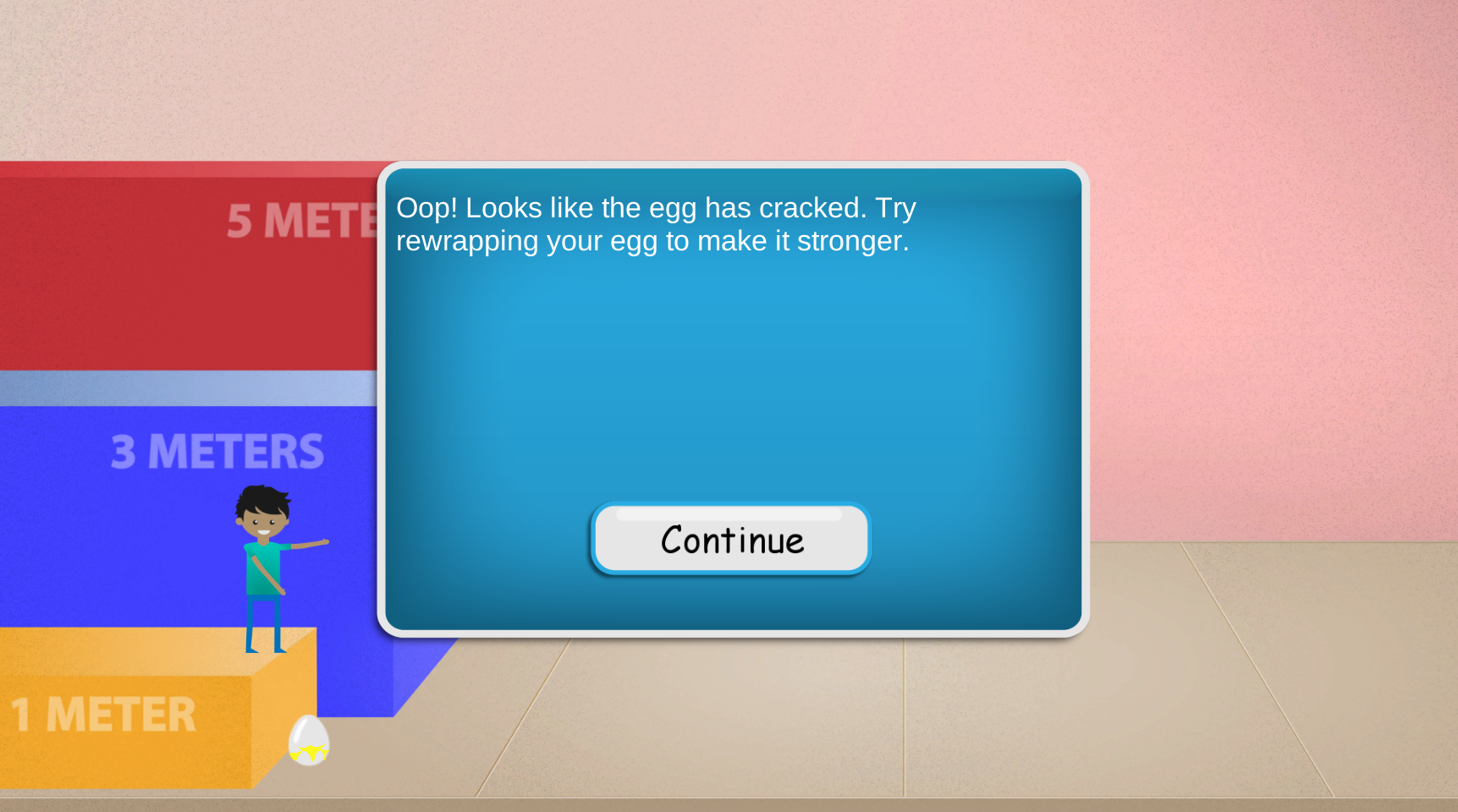
Egg Drop Lab. LLU. The student wraps an egg in up to four layers of materials, which may include 1 box type if desired. The order in which the box is placed does have a factor on the egg drop's success. The student must pass an egg drop test on 3 different heights, the last drop having the highest difficulty. The egg can be rewrapped at any time to improve their chances of success.

Fern Lab. LLU. A basic lab where the student goes through counting spores, sporangia, and pinnae on various images to eventually calculate the average number of spores on a species of fern. A calculator has also been implemented to help with the final calculations.
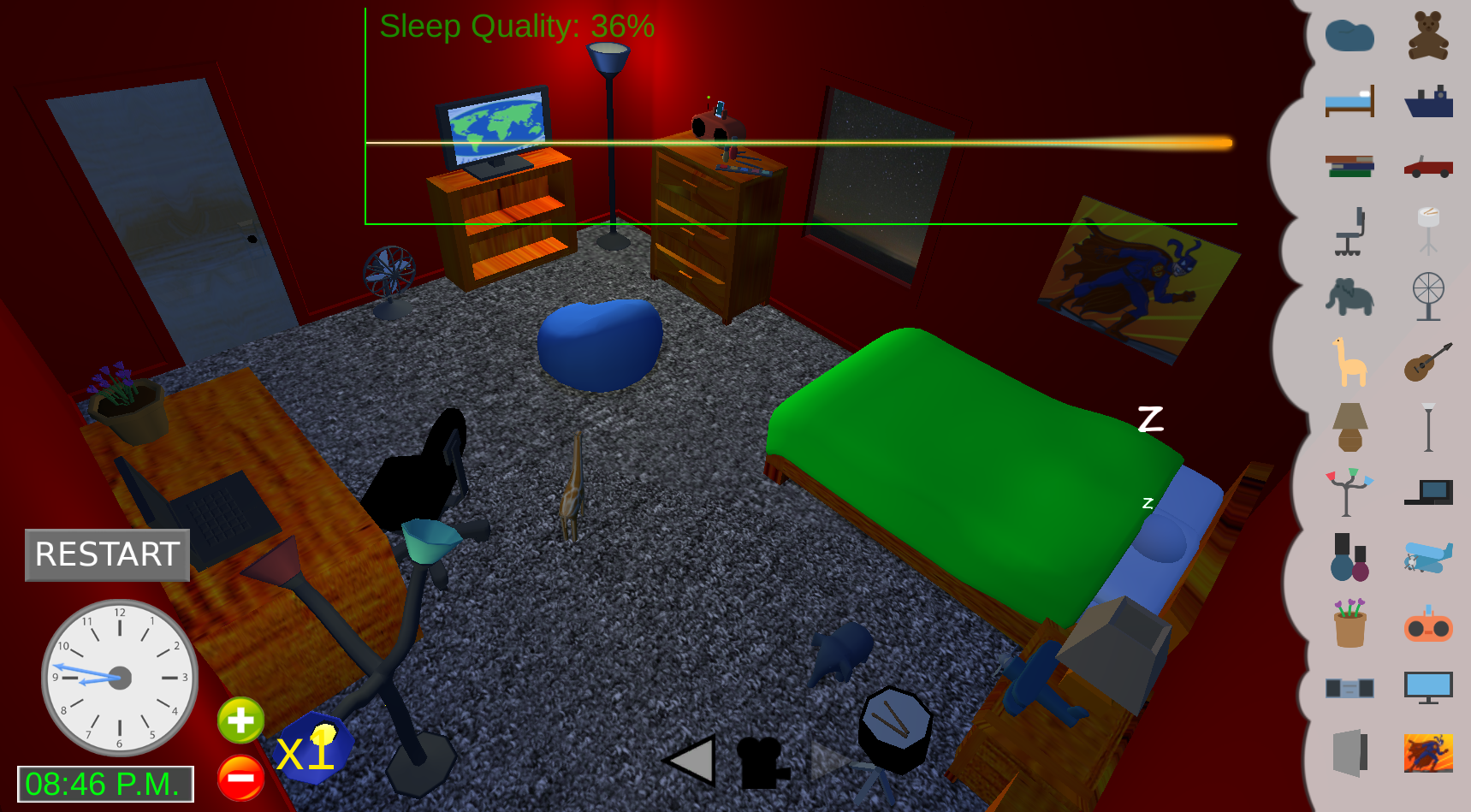
Sleep Lab. LLU. A sleep simulation lab where the student can observe changes in sleep quality in realtime as they add or remove clutter from the room, and turn on and off electronics. Random events also happen throughout the night that temporarily affect sleep. If the sleep quality drops to 0, the subject will be woken up and will need to fall asleep again. The overall sleep quality depends on how many hours were spent asleep multiplied by the sleep quality percentage of each hour. A second rotating camera with a particle system and tracer parented to it is used to act as the active sleep graph.

Ascension X. An ongoing collaboration project with artist and designer Chris Sanders. A fighting game similar to Killer Instinct. Characters implemented are Tatiana who dual-wields katanas, and Tempest, a fist fighter. Players can charge up meter for use with certain attacks, and an ultimate meter by dealing damage. Once the ultimate meter is maxed, they can ascend to a special form for 15 seconds, where they deal increased damage, receive reduced damage, and can use enhanced versions of certain attacks. They can also use up their remaining ultimate time to perform an ultimate attack that is difficult to dodge and provides temporary immunity during the attack. The game is being rebuilt for general cleanup and to make it easier to implement online multiplayer using Photon Unity Networking.

Build-A-Quifer Lab. LLU. Student sprays four different materials in a tank, places a tube at the desired level, fills the tank with polluted water, then attempts to extract potable water from it. Water quality is determined by Total Dissolved Solids in parts per million. Water flow is another factor that is affected by the amount of each material that is around and above the bottom of the tube. Procedural meshes used for the effect of filling the tank with materials.
About
Gamer and programmer. As of this moment, I am a diehard user of Unity and C#. I learned Unity on the fly and stuck with it ever since. I know Game Maker and extensive GML scripting. I also use PHP, HTML, JQuery, and CSS, at least when I need to. Developer of Indie Assault's gameplay engine. I currently work with clients for Inland Technology. I am also the programmer collaborating with Chris Sanders on the fighting game Ascension X. I went through the entire LUA manual simply to utilize the Minecraft Turtle mod to make it mine tunnels for me and automatically drop off items or build new chests next to old ones. I aim to someday join a major game company or to perhaps one day set up my own.












